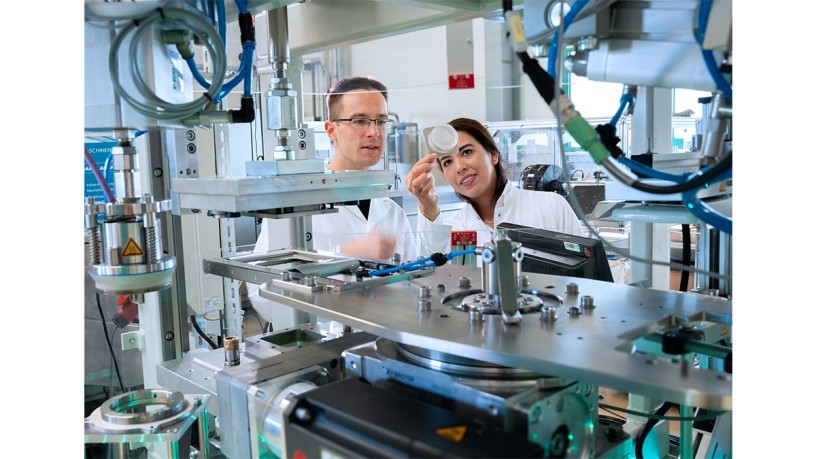Meat Substitutes: In Dynamic Pursuit of the Perfect Bite
Patented wet extrusion technology for increased flexibility
The heart of the machine is the large, continuously operating twin-screw extruder. The dry protein base, for example from soya beans or peas, as well as other ingredients with flavour or functional effects, is added at the beginning of the process pipe and water and, if necessary, oil are added separately. During the passage through the screw under pressure, the material is mixed, intensively kneaded, cooked, melted, and the protein structure is broken down and modified. In contrast to the usual wet extrusion process, however, the finished protein mass is not cooled in a static but instead in a dynamic outlet cooling nozzle. According to Clextral, this gives the products a muscle-meat fibre-like structure and a more authentic mouth feeling.

© Clextral
High-performance
Further advantages lie in the great flexibility of the technology and the high performance: Depending on the desired product, the process parameters can be set. These primarily include the temperature profile - well above 100 °C in the cooking zone - the pressure, the shear rate and speed and the dwell time in the extruder.
The innovation of the Galaxy is an inner axis that rotates slowly in the cooling nozzle. With the help of a frequency-controlled drive, the speed and consequently the shear can be specifically adjusted.
The Galaxy offers three positive aspects:
- The sensory properties of the plant products can be influenced by the interaction of recipes and process parameters within the extruder.
- Thanks to the significant reduction in the temperature of the extrudate in the cooling nozzle, no porous structures are formed by vaporising water as it exits via the gap.
- The additional gentle shear in the dynamic cooling nozzle ensures a stable, optimised structure.
Depending on the type of system, the throughput is usually up to 400 kg, but this can be increased further on an industrial scale. The protein mass leaves the extruder in the form of a 25 mm thick continuous strand. Depending on the manufacturer's requirements, it can be further processed into large fillet slices or the like and refined with breading and spices.
The Galaxy is now part of Clextral's official catalogue. After developing recipes with soya and peas, the company is now also working with customers at its own pilot plant in Firminy, France, to research the texturisation of other pulses - as vegetable raw material sources for protein with a high biological value.
For additional information, go to:




